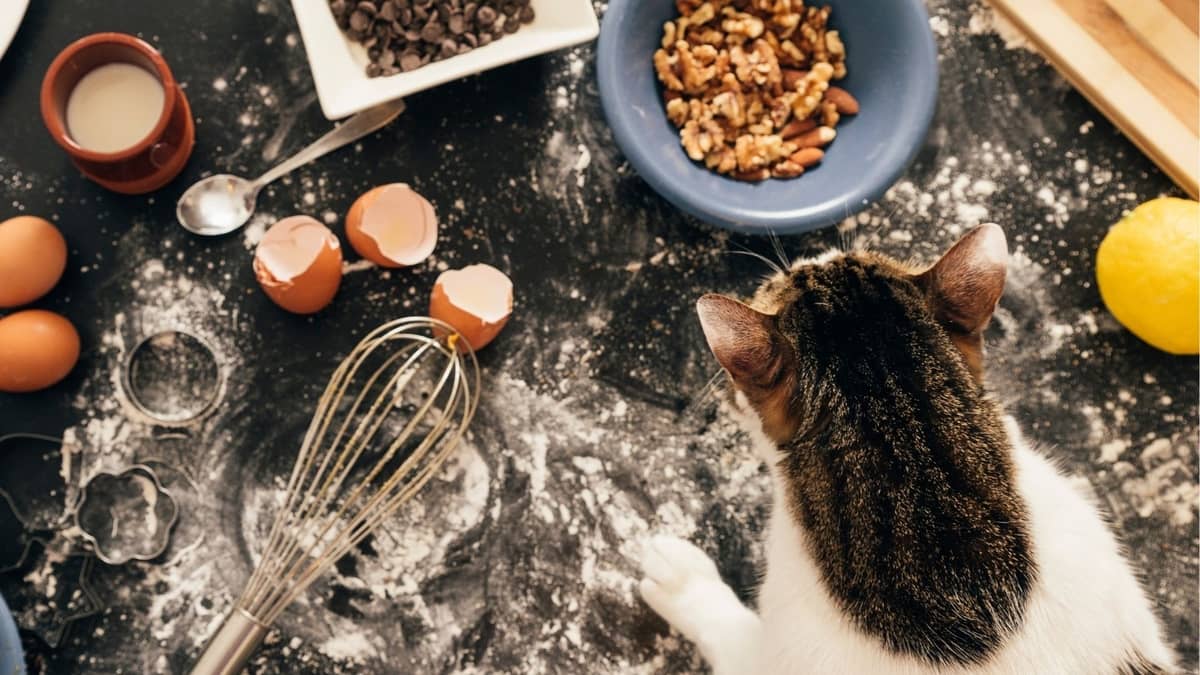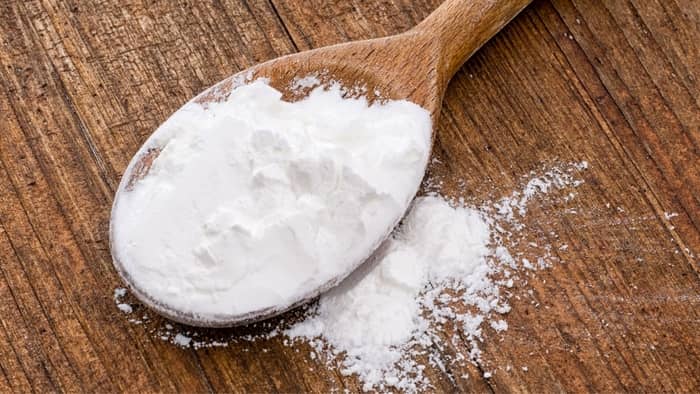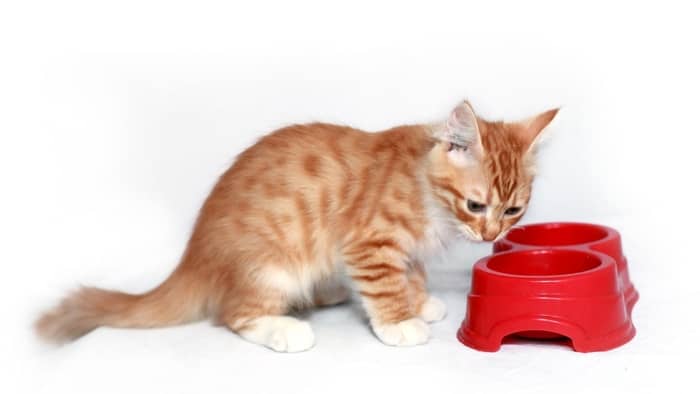With so many starchy foods being safe for cats, I almost didn’t ask myself if cats could eat cornstarch before I used it in their food.
When I give my cats dry food, I like to add a sauce to make it yummier. I once ran out of cat-safe dressing and decided to make my own. Runny sauces aren’t my thing, and because cornstarch is such a great thickening agent, it was the first thing that popped in my mind to use!
IMPORTANT: At stuffaboutcats.com, we regularly consult with licensed veterinarians and other industry experts. However, the information found on stuffaboutcats.com should not be viewed as veterinary advice. We do our best to help you better understand your cats, but the information on this blog is not a substitute for veterinary guidance.
I wasn’t sure if it was safe for my cats to eat, so I did a quick search. Some information I found confused me, and I decided to dig deeper. In this article, I share what I now know in the hopes of helping you make a healthy choice for your cats!
Can Cats Eat Cornstarch?
I’ll start by answering the most important question: Yes, cats can eat cornstarch, but it’s not without any risks.
Cornstarch won’t induce immediate toxicity in your cat, but large amounts can make them uncomfortable. The starch turns into glucose in their body, and cats don’t have the necessary enzymes to properly digest this.
Luckily, corn isn’t an allergy trigger for cats, and it does hold some nutritional value. In moderation, cornstarch is safe for cats to eat.
The Nutritional Value Of Cornstarch For Cats
Cornstarch is high in calories and carbs but lacks protein and fiber. It also contains some selenium, iron, and magnesium.
Many people think that carbs are just for filling purposes, but it plays a bigger part in cats. Cats don’t need carbs, but it’s a great source of readily available and highly digestible energy. When your cat consumes carbohydrates, the proteins in their body are spared to produce essential body tissue and maintain it, rather than being used for energy production.
Selenium is a powerful antioxidant, iron strengthens blood cells, and magnesium helps to keep your cat’s blood sugar levels healthy.
The Risks Of Feeding Your Cat Cornstarch
Giving your cats cornstarch has a few risks. If you only give it in moderation, the chances of your cat experiencing any adverse effects are slim, but it’s still a good idea to keep an eye out for any signs that they may be intolerant. Here’s what they could experience:
- Abdominal Discomfort
- Appetite Loss
- Constipation
- Diarrhea
- Excessive Drooling
- Nausea
- Vomiting
If you notice that your cat is experiencing any of these symptoms and it doesn’t subside in a day, you should take them to a vet for a check-up!
There are also a few things that could happen if your cat regularly overeats cornstarch. These are serious:
Heart issues
Cornstarch isn’t a bad food, but because it contains so many carbs and calories, it could lead to heart disease when your cat overeats it.
High blood sugar levels
If you include too many carbohydrates in your cat’s diet, they can develop high blood sugar levels.
Increased gas
When cornstarch starts to break down in your cats’ body, it can produce excess gas.
Food-borne diseases
You should avoid giving your cat raw cornstarch – even when sprinkling it over or mixing it into food. Uncooked cornstarch can house bacteria that could cause many food-borne illnesses in your cat.
Cornstarch Alternatives
If you want to create a golden fried crust on your cat’s fish or thicken a sauce that will have them purring for days, but you have no cornstarch on hand, these alternatives will work great!
For thickening
- All-Purpose Flour
- Arrowroot Starch
- Tapioca Starch
For frying
- Rice Flour
- Potato Starch
How Much Cornstarch Can Cats Eat?
There’s no definite rule on how much cornstarch is safe for cats to eat, but I recommend not giving your cat more than a 1/3 cup per week.
You can use cornstarch in several ways, but the easiest for me is making sauces with it. Sometimes, I also mix it in yogurt, use it as a thickener when making cat-safe ice cream, and sprinkle it over my cat’s wet food.
Cornstarch is tasteless, so your cat won’t know the difference no matter where you use it!
Can I Use Cornstarch On Cats Externally?
Yes! Cornstarch makes an excellent natural flea repellent.
To keep fleas at bay, sprinkle cornstarch all over your cat and let it sit for about 10 – 15 minutes. Then, brush it off. Cornstarch is a simple home remedy for fleas, and it works like magic!
To Wrap It Up
Cats don’t need cornstarch in their diets, but if you want to use it to fry or thicken something, it won’t harm them. Like any human food, you should only feed cornstarch to your cat occasionally and ensure that it is cooked before doing so.
Cornstarch can be dangerous if misused, but if you include it in your cat’s diet safely, it can benefit them. Cats who consume cornstarch have lots of energy, and you can even use it to help your cat get back on track if they have weight issues.
I hope you found the explanation of the benefits and risks of cornstarch for cats valuable and that you now know how to safely include it in their diet. If you have any more questions, you can ask them in the comments. You’re also welcome to share feeding ideas or any cornstarch-containing recipes that are non-toxic to cats!
Read more about Is Wheatgrass Good For Cats?
FAQs
Do cats like starch?
It's unlikely that cats will enjoy eating starch in its raw form, but they do like starchy foods.
Can cats have corn?
Corn is perfectly safe for cats to consume, and yours is probably already getting some through their cat food.
Is corn flour safe for cats?
Corn flour is safe for cats to ingest, but whole wheat flour is healthier.
Is corn flour the same as corn starch?
No.
Corn flour is made from dried corn that is finely ground to form a yellow powder, while cornstarch is made from the starchy part of a corn kernel to create a white powder.


